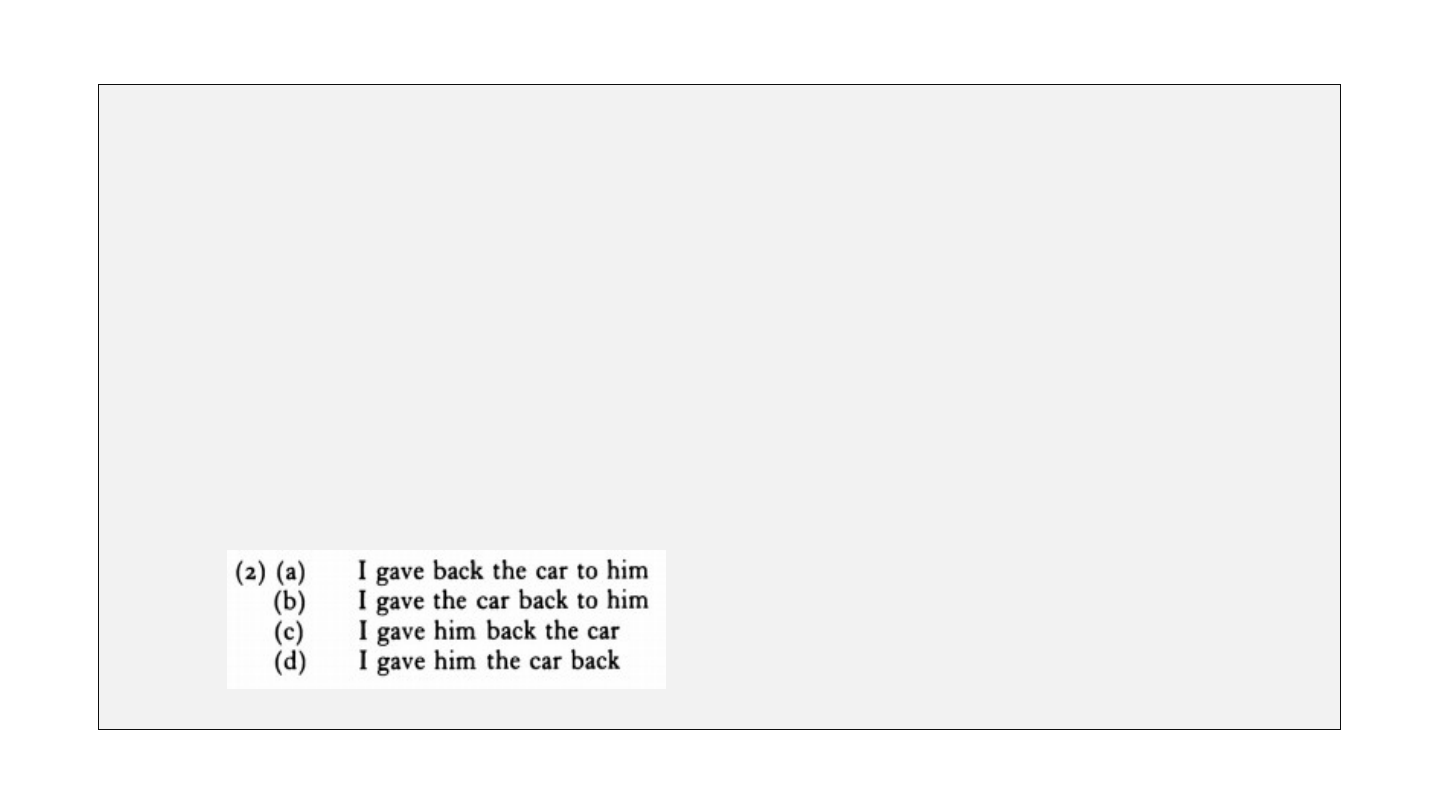
5. Grammatical competence subsumes three primary types of linguis-
tic ability —
syntactic, semantic, and phonological.
[1] Syntactic ability
(A) Intuitions about well-formedness: Depending on his grammatical compe-
tence,
the native speaker has the ability to combine words together to form grammati-
cal
sentences in his native language, and to know which sequences of words form
grammatical or ungrammatical sentences. Any English native speaker would
intuitively recognize that all of the examples in (2) are grammatical.

But English native speakers also know the following are ungrammatical.
(B) Intuitions about Syntactic Structure: There is the native speaker’s intuitions
about
the syntactic structure of sentences in his language.
(3) John likes very fast cars.
Any native speaker would agree that very modifies fast (and not likes), and that
very fast modifies cars and not John.
=> Thus, the native speaker has two types of syntactic intuition: intuitions
about
well-formedness, and intuitions about syntactic structure.

[2] Semantic Ability
(A) Intuition about Well-formedness: Depending on the semantic abilities which
form
part of the native speaker’s grammatical competence, native speakers have the
intuitions about the semantic well-formedness or ill-formedness of sentences.
Thus, any native speaker of English would agree that (4a) is semantically well-
formed, but that (4b) is semantically ill-formed.
(4) (a) I thought Mary was ill, but it turned out that she wasn’t. (well-formed)
(b) ! I knew Mary was ill, but it turned out that she wasn’t. (ill-formed)
(! In front of a sentence means that it is semantically ill-formed)
( The verb thought implies the truth or falseness of Mary was ill,
but the verb knew implies only the truth of Mary was ill. So (4b) is ill-formed since
the fact that Mary was ill is denied, as she wasn’t, in the following sentence.)

(B) Intuition about Semantic Structure:
Depending on the intuitions about semantic structure, any native speaker
of English will tell you that the fool can be interpreted as coreferential to
Harry in (5a), but not in (5b). In (5b), the fool can be interpreted as another
third person, not referent to Harry.
(5) (a) I don’t like Harry₁, because the fool₁ hates Linguistics.
(b) Harry₁ says that the fool₂ hates Linguistics.
=> Intuitions about coreference relations in sentences are part of the set
of intuitions we have about semantic relations in and between sentences.

[3] Phonological Ability
(A) Intuition about Well-formedness: Based on the phonological abilities sub-
sumed
under grammatical competence, there is the native speaker’s intuitions about
the phonological well-formedness or ill-formedness of sentences in his language.
All speakers of English would agree that (6a) is phonologically well-formed,
but that (6b) is phonologically ill-formed (the syllables receiving primary stress
are italicized).
(6) (a) This is a grammatical sentence. (well-formed)
(b) This is a grammatical sentence. (ill-formed)
=> English native speakers intuitively know that the stress pattern as in (6a) is
right.

(B) Intuition about Phonological Structure:
Due to the intuitions about phonological structure, English native speakers
can differentiate from the two meaning of the sequence black bird.
(a) blackbird (with primary stress on black) means a species of bird,
like thrush, robin, etc. It can be a single phonological word.
(b) black bird (with each own primary stress) means a bird which is black, as op-
posed
to white bird. It can be two independent phonological words.
# Overall, grammatical competence subsumes two types of intuition: (i) intuition about
syntactic/semantic/phonological well- or ill-formedess, and (ii) intuitions about
syntactic/semantic/phonological structures.